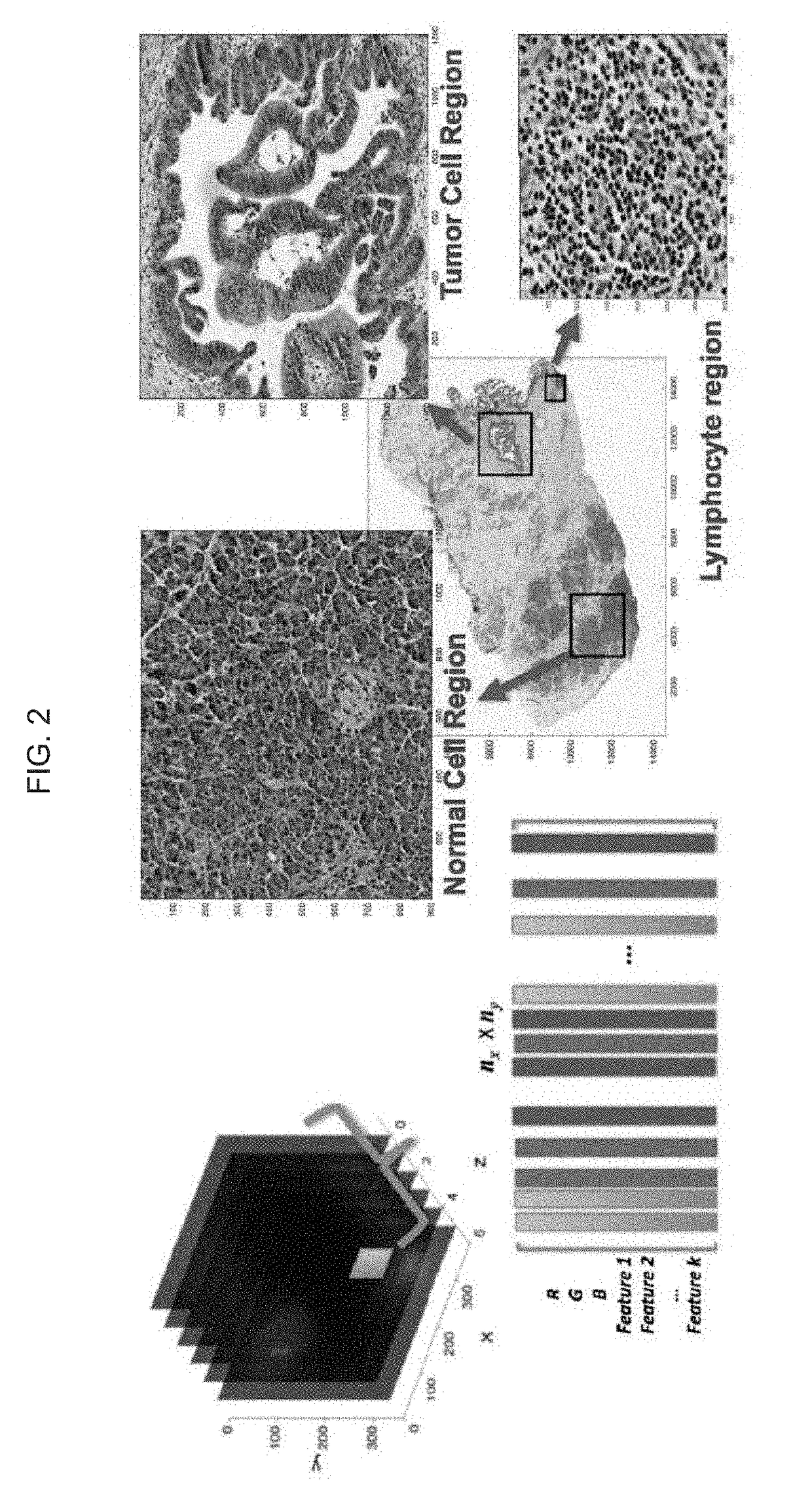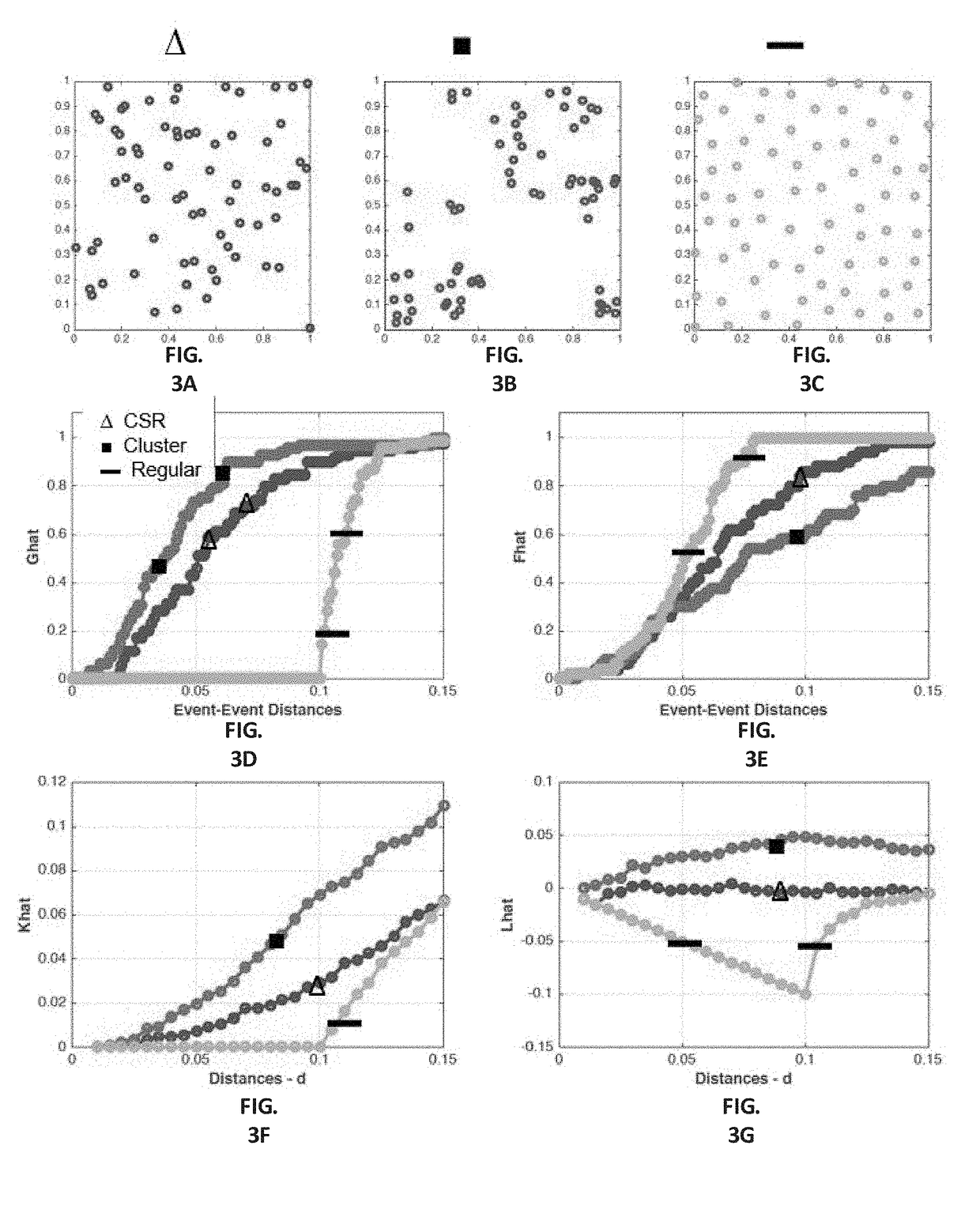Automatic nuclei segmentation in histopathology images
a nucleus and image technology, applied in image analysis, image enhancement, instruments, etc., can solve the problems of time-consuming and often infeasible large-scale studies
- Summary
- Abstract
- Description
- Claims
- Application Information
AI Technical Summary
Benefits of technology
Problems solved by technology
Method used
Image
Examples
embodiment 1
2. The system of embodiment 1, wherein the image-capture device and / or the control unit is configured to carry out one or more operations automatically.
3. The system of embodiment 1, wherein the image of the cell population is a histopathology image.
embodiment 3
4. The system of embodiment 3, wherein the histopathology image is (a) an image of hemolysin and eosin (H&E) stained tissue section, or (b) an immunohistochemical (IHC) image including labeling of a biomarker in a tissue section. Optionally, the IHC image in some embodiments is one of a series of images from a single tissue section, each image reflecting the labeling of at least one different target within the tissue.
5. The system of embodiment 1, wherein the image-capture device further is configured to: (A) determine a response of a Gabor filter based at least in part on a first input-pixel value of a first pixel of the pixels of the image; and at least one of the per-pixel feature values associated with the first pixel is the response of the Gabor filter; and / or (B) determine a response of a Haralick filter based at least in part on a first input-pixel value of a first pixel of the pixels of the image; and at least one of the per-pixel feature values associated with the first pix...
embodiment 8
9. The system of embodiment 8, wherein at least one super-pixel includes at least one of: an R, G, B, Panchromatic (broadband), C, M, Y, Cb, Cr, CIE L*, CIE a*, CIE b*, or other data value of or determined based on a corresponding pixel; a Gabor filter response associated with a corresponding pixel; a Haralick feature value associated with a corresponding pixel; or another feature value associated with a corresponding pixel.
10. A computer-implemented method, including: capturing an image of a cell population, the image including input-pixel values of respective pixels of the image; determining a feature image based at least in part on the input-pixel values, the feature image including super-pixels associated with respective pixels of the pixels of the image, wherein each super-pixel includes one or more per-pixel feature value(s) associated with the respective pixel of the pixels of the image; determining a plurality of clusters based at least in part on the feature image, wherein ...
PUM
 Login to View More
Login to View More Abstract
Description
Claims
Application Information
 Login to View More
Login to View More - R&D
- Intellectual Property
- Life Sciences
- Materials
- Tech Scout
- Unparalleled Data Quality
- Higher Quality Content
- 60% Fewer Hallucinations
Browse by: Latest US Patents, China's latest patents, Technical Efficacy Thesaurus, Application Domain, Technology Topic, Popular Technical Reports.
© 2025 PatSnap. All rights reserved.Legal|Privacy policy|Modern Slavery Act Transparency Statement|Sitemap|About US| Contact US: help@patsnap.com



